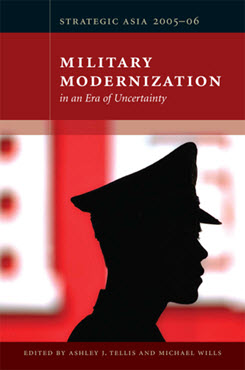Overview
Military Modernization in Asia
This chapter overviews the strategic environment in Asia as it affects the military modernization efforts being undertaken by states in the region.
EXECUTIVE SUMMARY
This chapter overviews the strategic environment in Asia as it affects the military modernization efforts being undertaken by states in the region.
MAIN ARGUMENT
Asian militaries are transforming their capabilities in order to cope with various kinds of strategic uncertainty. The defense transformation strategies followed by different Asian states reflect their specific threat environments, economic performance, security dilemmas, and national regime and state structures. This change has the potential to alter the region’s strategic balance, and poses significant opportunities and challenges for both the U.S. and Asia.
POLICY IMPLICATIONS
- Although a broad consensus exists across Asian states regarding the necessity of peace and political stability for the achievement of economic prosperity, a number of structural drivers, reinforced by internal considerations, are pushing states to invest in military modernization.
- China, India, Russia, Japan, and the U.S. are each qualitatively improving the force structure, warfighting capabilities, and deployed inventory of their armed forces. Most states are also increasing defense outlays and incorporating RMA components into their military modernization programs, with significant consequences for the regional balance of power.
- The U.S. will be called upon to maintain or even increase its role as regional security guarantor for a number of Asian states. This will require the U.S. to preserve its current military dominance, protect its existing alliances, and develop new ties to major states that are not allied or opposed to Washington. Not doing so would likely lead to military build-ups, increased tension, and even nuclear weapons proliferation.
- China will increasingly be the most important actor in Asia, both for other Asian countries as well as for the U.S. Many Asian powers are responding, at least in part, by developing military capabilities and outlaying defense expenditures as a safeguard against China’s rise.
Strategic Asia
The Strategic Asia annual edited volume incorporates assessments of economic, political, and military trends and focuses on the strategies that drive policy in the region. Learn more about Strategic Asia.


